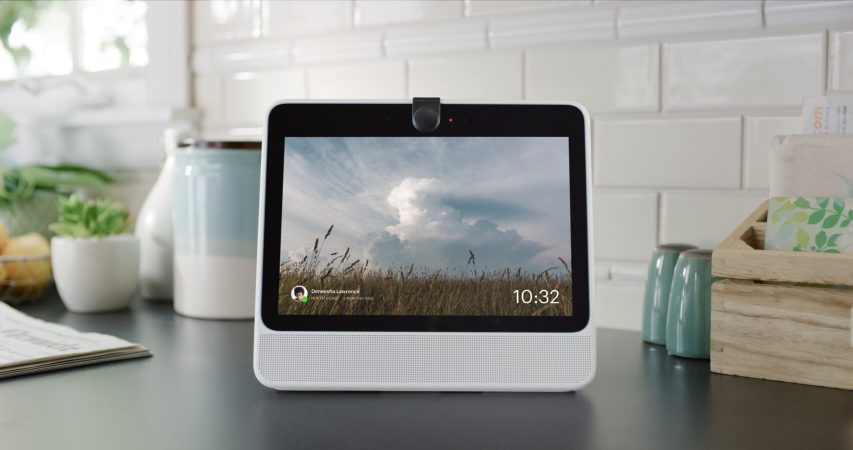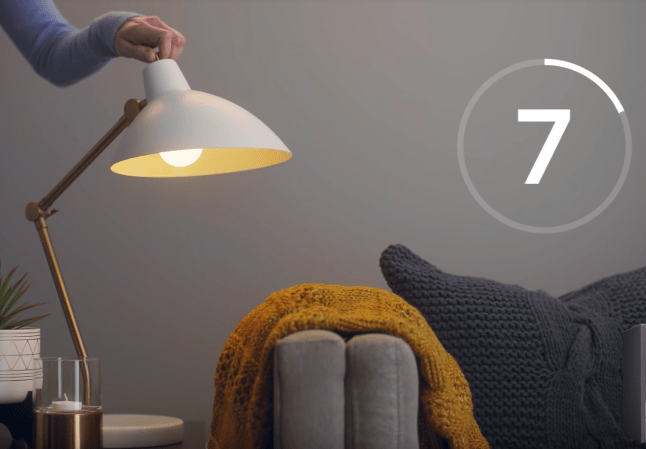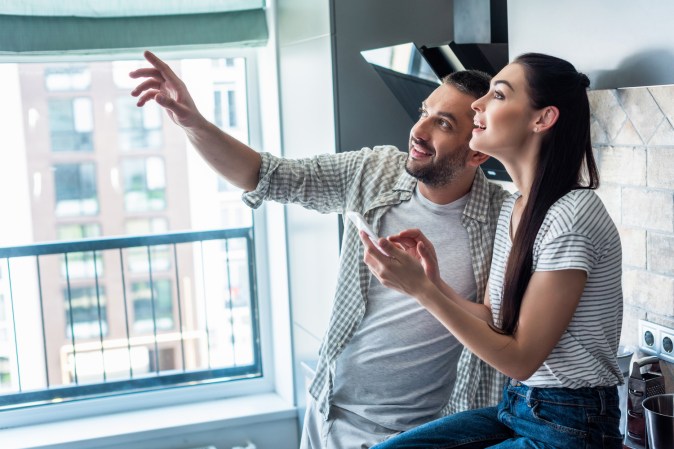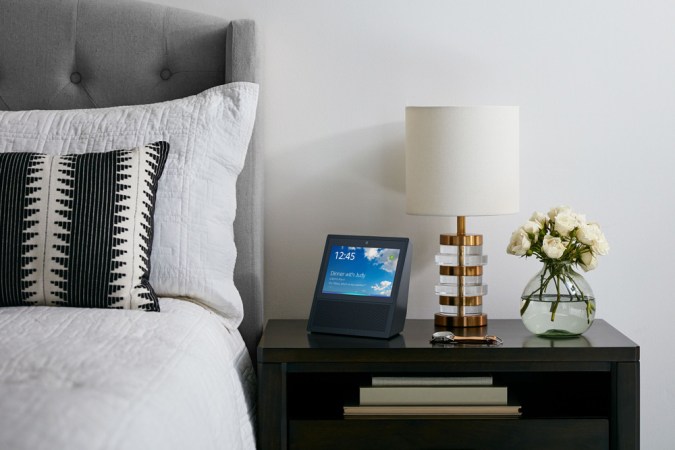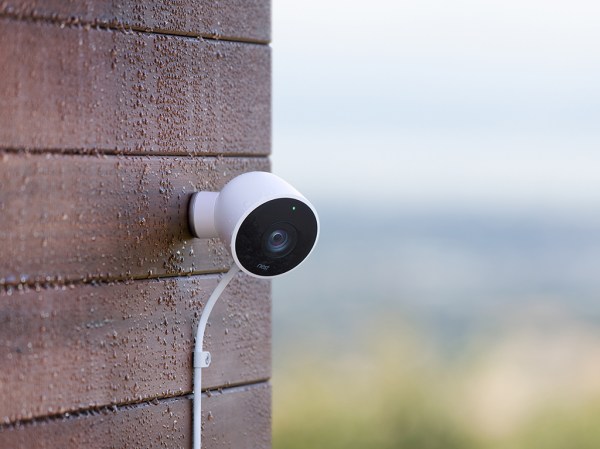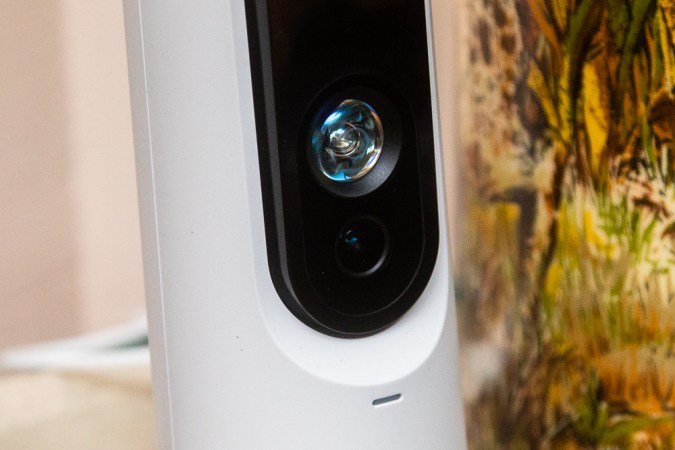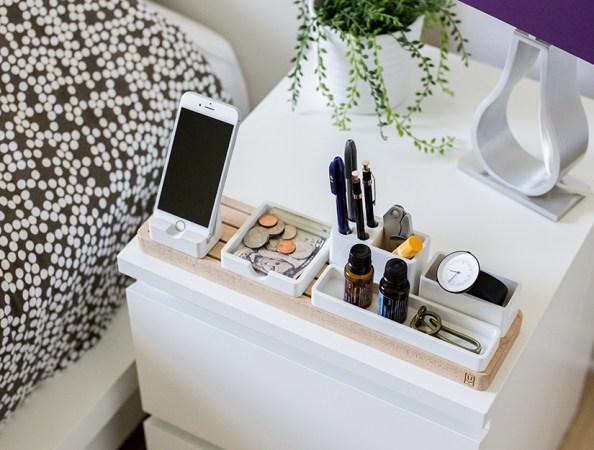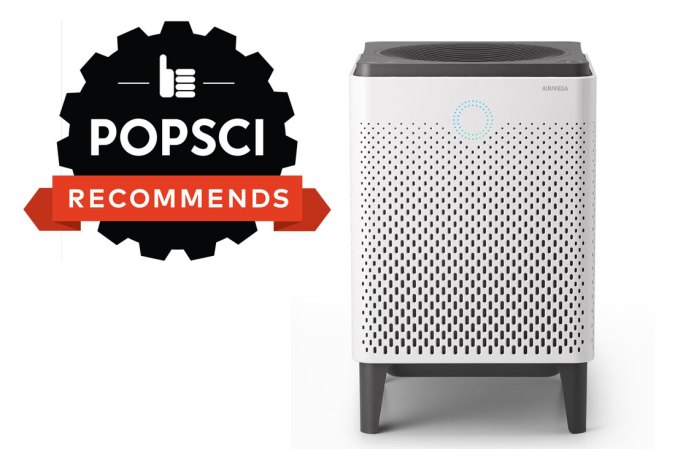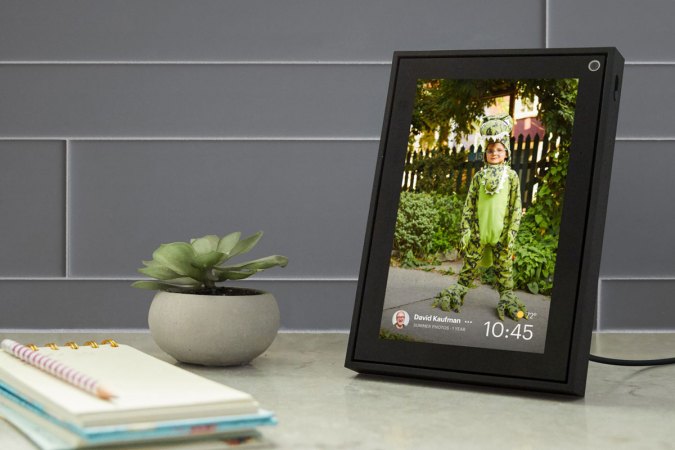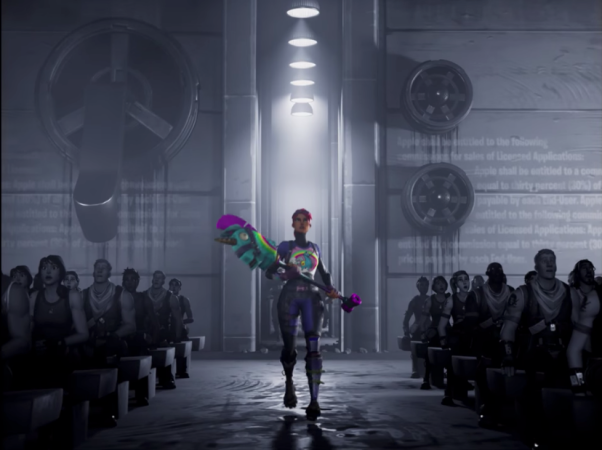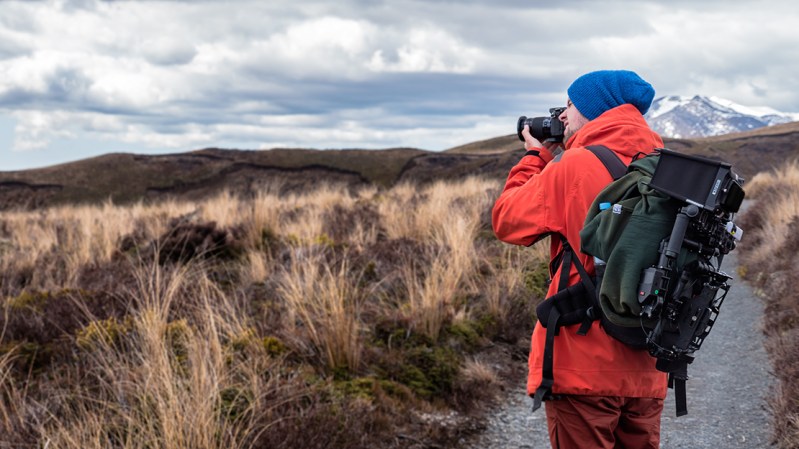

We may earn revenue from the products available on this page and participate in affiliate programs. Learn more ›
In a stay-at-home world, a self-contained display-and-webcam combo device made specifically for sending and receiving video calls—videophones, if you will—feels like both an extravagance and a necessity. On the one hand, you probably already have a computer with a webcam lying around for work and/or school. Your phone probably has similar capabilities. On the other, you don’t want to sit in your workspace all day, and using a phone isn’t great for long, leisurely conversations with friends and family. Suddenly, a flexible camera-enabled screen made for kitchens and living rooms seems a lot more appealing.
A Portal Go, the more casual of the company’s two new video-calling devices, fills the flex screen role nicely. With an extra-wide 10-inch display, a 12MP webcam with a 120-degree field-of-view, and strong stereo sound, it has everything you need for a very comfortable, easy-going video-call setup. It offers access to a limited app library, facilitating some secondary uses, including a portable smart speaker, digital photo frame, and web-enabled cookbook. (There’s a web browser, too, opening the doors to a much wider range of tools.) Though there’s certainly room for growth, the Facebook Portal Go certainly makes a strong case for a whole world of devices that I’d mostly written off.
Smarter Screen, Smarter Life
The Facebook Portal Go’s design and features
When you see the Facebook Portal Go with the screen off, it resembles a big doorstop. Measuring 10.10 by 7.44 by 3.00 inches (WDH), the wedge is covered with a grey fabric that gives it sort of a housewares kind of vibe. That’s by design, of course: The Go is the casual Portal—as opposed to the less mobile, but more powerful Portal+—and meant to blend in with couches and cushions and countertops.
Casual, in this case, also means portable. The Portal Go features a 44 Watt-hour battery, allowing you to carry it around and position it independent of power. It weighs just 3.23 pounds and even has a built-in handle, so it’s very easy to lug it around the house or even bring it with you on a trip. Still, finding it a home near an outlet would be a wise decision, as it should only last through 5 hours of video calls or 13 hours of audio-only calls.

How does the picture look?
The Portal Go’s display is one of its quirkier qualities. The 8.5- by 5.31-inch screen outputs at an extra-wide 800 x 1280 resolution. That technically counts as HD, but it isn’t quite as sharp as what you’d get with a PC, TV, or flagship smartphone thanks to relatively low pixel density. If you decide to watch Netflix, YouTube, or any other streaming content, it will likely downshift to 720p, making it less than stellar for video content.
Still, most content looks fine on the screen. Photos generally look sharp and bright in digital photo-frame mode and in the photos app. Images from the web look similarly “precise.” (It likely helps that you’re often looking at the 10-inch screen from far away compared to a phone or PC monitor.)
A camera that looks around
The Portal Go’s 12MP camera doesn’t capture the standard head-and-shoulders pictures of a PC webcam. It features a 125-degree ultrawide field-of-view, allowing for you to capture much more of your surroundings, and/or easily fit multiple people on the call. It’s no replacement for a great PC webcam; Sitting the Portal on my desk, it captures my whole upper torso and much of the office behind me—much more than the precisely positioned and tightly cropped stream from PC webcam. Plus, the ultrawide lens creates a fisheye effect if you set it too close. That’s not flattering for anyone.
That said, it thrives in public spaces like living rooms and kitchens. If I set it on my living room coffee table, it can capture my whole couch, allowing three people to comfortably hang out on a call. In a small-to-medium kitchen, you can probably fit two to four people in a shot. Most webcams are meant to capture a single person sitting at a desk so, if nothing else, this gives you a wider range of options.

The Portal Go is designed to be a “set it and forget it” camera solution. You can’t adjust the camera’s focus or framing beyond moving the device itself. The camera adjusts itself. The Portal Go can use its ultrawide lens to lightly shift and pan its picture, centering around the subject(s) of a video call or photo booth session. The camera also features adaptive lighting, which changes the color temperature to match the lighting in the room.
Relying on these settings makes for a very convenient experience, but also feels limiting. It rarely miscalculates, though it only gets a perfect shot in very specific conditions: framing two to three people in a well-lit room with fairly neutral lighting. I wouldn’t rely on it for a work call or content creation when you need to look sharp, but the camera does keep you in frame—important given the width of the shot.
What about the Facebook Portal Go sound?
Surprisingly, the Portal Go really excels in the audio department. It features two 5W stereo speakers on either side and a 20W subwoofer, which provides a surprisingly crisp sound and booming bass. It makes for clear audio in video calls but really shines when using the speaker for music via the Spotify and Pandora apps, or another web-based music player. It’s no replacement for a home theater system, but the Portal Go can absolutely keep up with (or, more likely, replace) an audio-only smart speaker.
Going the other way, the Facebook Portal Go uses a four-mic array to pick up accurate chatter within its larger than average viewing range. The quality is clear but easily muddied by any background noise. (Not surprising, considering there’s no boom or means of limiting ambient sound.) In addition to using it for calls, the Portal Go supports both the Facebook virtual assistant and Amazon Alexa, so you can get the full smart speaker experience. In general, I found the mics picked up my random requests to hear the weather and bite-sized news reports so long as I’m in the same room.
What kind of video calls can you make?
Being a Facebook product, the Portal Go primarily wants you to use Meta-owned services to make calls. It isn’t 100-percent exclusive, though. At launch, the Portal Go features apps for making video and/or audio calls via Facebook Messenger, WhatsApp, Zoom, and Cisco WebEx.

In theory, you should be able to make calls through some other services via the Portal Go’s web browser, but it’s not a seamless process. Specifically, I tried and failed to join multiple Google Meet calls through the browser. As such, the Portal Go only makes sense for people who already use Facebook and Zoom for most of their video calls.
What other apps are there?
Though the Facebook Portal Go is primarily for making video calls, it is a multifaceted device. In addition to its capabilities as a smart speaker, you can create a photo album to use as a screensaver for the Portal, turning it into a digital picture frame. It also has a photo booth feature, which lets you record photos and short 30-second videos. It also features an interactive augmented reality app called “Story Time,” which shows you a series of camera overlays based on children’s stories. I don’t have kids, so I’m not the proper audience, but the interactive element feels thin—It’s more of a tech demo than a genuine activity.

In addition to the video chat software, there is a small library of Portal apps to download for secondary functions, including music platforms like Spotify and Pandora, a Food Network recipe app, and an app that plays CBS news 24/7. (Also, since this is a device with a screen, there’s a Plex app.) Though the app lineup has options for most of the things I’d expect people to do with the Portal Go, the selection is extremely small. The list feels as if it were curated to set the scope of the Portal should or could be used for, rather than to present a wider set of options for people.
But don’t forget there’s a web browser!
Fortunately, the lack of native apps doesn’t hamper the Portal Go all that much. Using the app’s web browser, you can access most popular services and platforms without a dedicated app. You can watch Netflix, YouTube, and Twitch. You can access podcasts if you use a third-party app with a web version like Pocket Casts. You can access mobile-optimized sites like NYT Cooking, which often provide better alternatives than the Portal’s native apps.

Crucially, you can create a bookmark icon that will appear alongside the native apps you’ve downloaded in the apps menu, streamlining the web app experience to the point where there’s effectively no difference between the two. In fact, you may prefer the web versions of some platforms with native apps. The Portal’s Spotify app, for example, only shows premade playlists.
As I mentioned, there are limitations. Ironically, accessing video calls through the web seems to be a non-starter. I also wouldn’t recommend doing anything that requires too much typing: The on-screen keyboard is functional but is ultimately a slow, unwieldy typing experience. Still, the web experience is good enough to overcome the Portal platform’s poor app selection and make good on the idea that the Portal Go can be a versatile way to bring the web into a room without a TV or computer.
So, who should buy the Facebook Portal Go?

I have to be honest: I was not sold that people would need a videophone like the Portal Go. Having largely dismissed smart speakers as unnecessary and an invasion of privacy, I assumed that these devices wouldn’t add much value for anyone who already has a laptop. But the Portal Go has at least sold me on the concept of the videophone. It reframes personal video calling, making it feel more casual. I also appreciated being able to use a device other than my phone or laptop for looking at the web, watching YouTube, and listening to music or podcasts in my kitchen without using my laptop or phone. It is definitely a luxury—I can do all these things with devices I already own—but using the Portal Go (or something like it) feels a little bit more relaxed.
As for whether the Facebook Portal Go is the best option, that’s hard to say. It isn’t without its quirks, problems, and disqualifying limitations. Depending on what platforms you use for video calls and how much you care about display resolution, it may or may not be a good fit. Those issues will vary person to person, though. Overall, the Facebook Portal Go makes good on the promise of the dedicated video-call gadget—whether you choose to call that a videophone or something else.

